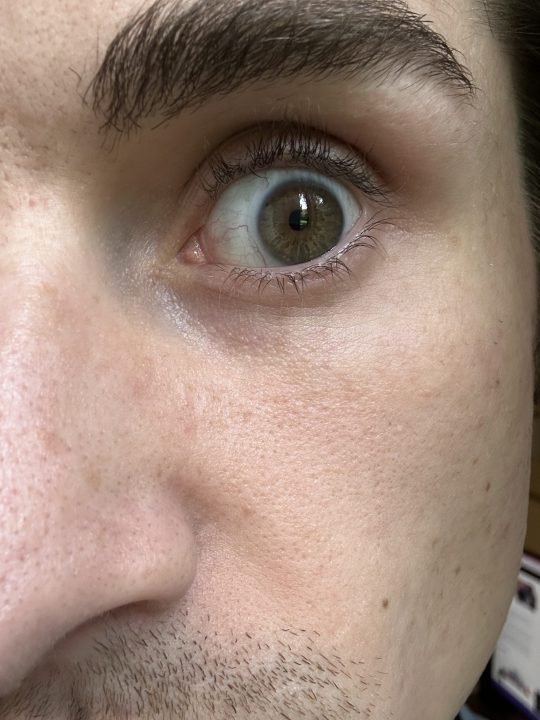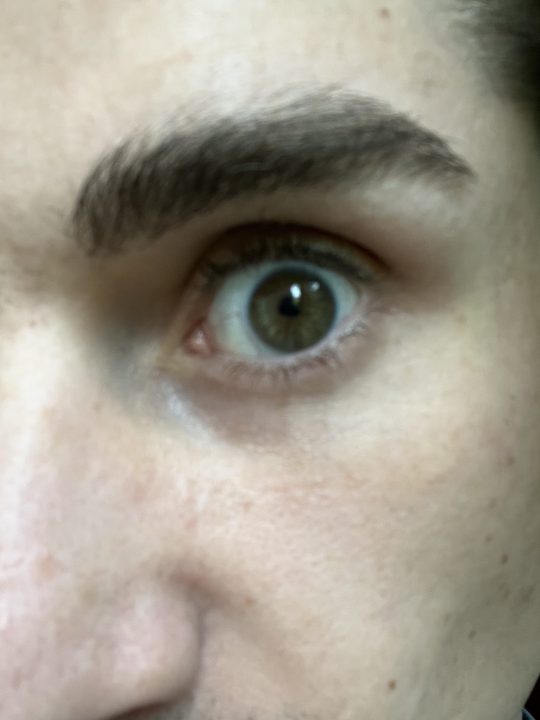Apple’s iPhone 14 series has landed, and just like last year, we’re treated to a quartet of new iPhones to play with. There’s the iPhone 14 Pro Max, iPhone 14 Pro, iPhone 14 Plus, and bringing up the rear is the regular iPhone 14.
Given the excitement around the new Plus model and the Dynamic Island on the Pro variants, it’s easy to overlook the baseline iPhone 14 this year. But after some initial hands-on time with it, doing so would be a disservice.

At the time of publication, I’ve been using the iPhone 14 for about 48 hours. It’s not enough time to form a full review, but it has let me try some of the iPhone 14’s biggest features. And in the process, it’s taught me a few very important things about Apple’s latest.
The A15 Bionic remains a killer chip

For tech nerds like myself, the elephant in the room with the iPhone 14 is its A15 Bionic chip — the same one used in the
While the A15 may not be quite as fast as the A16 chip found in the
And just like on the
During my first full day using the iPhone 14 as my primary
Action mode feels like magic

Although I need more time to really put the iPhone 14’s camera to the test, there is one feature I’ve already had a chance to play with, and that’s Action mode.
Action mode is a new video-recording option available for all iPhone 14 models, and Apple claims it uses “advanced roll correction” and “more overscan” to make action-packed video look stable. Apple’s demonstration of Action mode looked quite impressive during its Far Out event, but I wanted to see if it was actually that good in practice.
To test Action mode, I recorded a few videos of myself running through a park with my dog. I recorded all of these videos with a leash in one hand and the iPhone 14 in the other — running aimlessly and carelessly jostling the iPhone every which way while doing so. The video above is with Action mode enabled, and the results speak for themselves.
The benefit of Action mode becomes even more apparent when you then watch a video with it disabled. This was with similar running and movement, and as you can see, the non-Action mode video is significantly shakier.
Turning Action mode back on again, the video instantly becomes smoother and far easier to watch. I’m not sure how often I’ll actually find myself using Action mode in everyday use, but at least during my initial testing of the feature, I’m very impressed with what I’m seeing.
Apple’s new selfie camera is a huge win
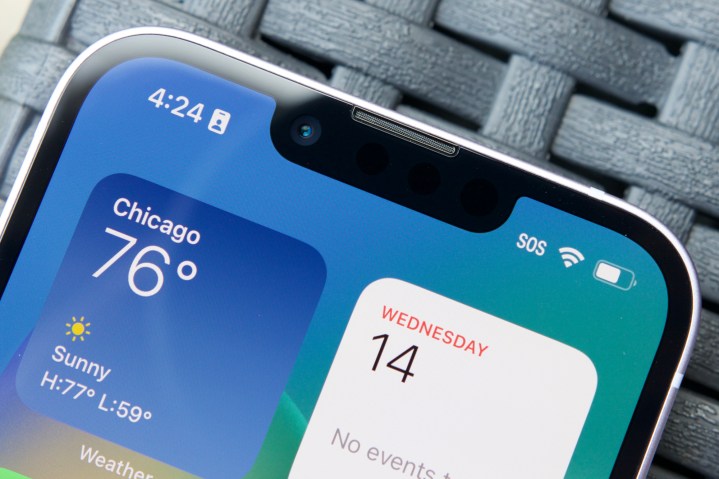
Speaking of cameras, another big change for the iPhone 14 is its new front-facing camera. It’s still a 12MP sensor, but it has a much larger f/1.9 aperture (compared to f/2.22 on previous models) and adds autofocus for the very first time. The end result is a selfie camera that’s much more versatile.
Taking a selfie in good lighting conditions, a photo from the iPhone 14’s selfie camera doesn’t immediately look much different compared to a selfie from the iPhone 13 Pro. But look a little closer, and you quickly see the improvements.
- 1. iPhone 14 selfie
- 2. iPhone 13 Pro selfie
The iPhone 14’s selfie shows noticeably more detail in my hair and showcases individual strands, whereas the
- 1. iPhone 14 selfie
- 2. iPhone 13 Pro selfie
Having autofocus on the iPhone 14’s selfie camera also means you can get much closer to subjects than before. In the close-up shot of my eye, the iPhone 14 is able to focus on my face and capture everything in crisp detail. Since the
Even as someone who doesn’t take a lot of selfies, I’m impressed with the upgrades Apple made here. I’m not sure they’ll convert me to being an avid selfie-taker, but for anyone who does use their front-facing camera a lot, I’m excited about these early results.
No troubles with eSIM
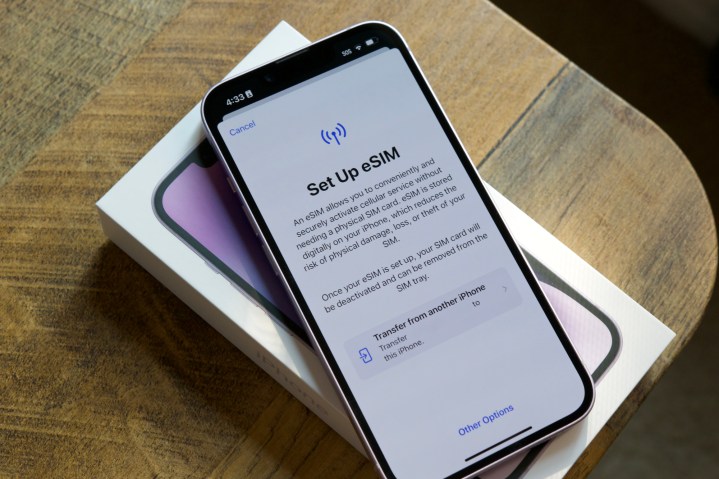
Even more controversial than the reused A15 chip is the iPhone 14’s lack of a physical SIM card. All iPhone 14 devices sold in the United States only support a virtual eSIM. While eSIM technology itself isn’t new, the idea of relying exclusively on eSIM in place of a physical SIM has raised concerns.
So, is it the big, scary shakeup that some people are making it out to be? For many folks, most likely not. I transferred my T-Mobile phone number from my iPhone 13 Pro to the iPhone 14. Apple prompts you with this transfer option during setup, and you can do so later on at any time from the Cellular page in the Settings app.
From the Cellular page, you tap Add eSIM, tap Transfer From Nearby iPhone, and both phones automatically connect via Bluetooth. After entering a verification code to confirm your two iPhones, you tap the number you want to transfer, tap some additional prompts, and wait a few minutes for your number to be transferred from your old iPhone to the new one. All-in-all, the whole process took around two or three minutes, and my T-Mobile number is now running without a hitch on the iPhone 14.
Just transferred a T-Mobile eSIM from a 13 Pro to a 14 and yeah— the whole process for transferring eSIMs is shockingly quick and simple
eSIM isn’t without its faults, but it’s also not the big scary monster some are making it out to be https://t.co/gHNg6KKs2O
— Joe Maring (@JoeMaring1) September 15, 2022
Of course, that’s just how eSIM worked for me. Michael Fisher notes that he encountered a longer activation time on his
It’s a system that clearly still needs some work. Maybe Apple rushed into things too quickly, or perhaps its gung-ho nature on eSIM this year will force carriers to quickly iron out any remaining kinks.
A 60Hz display in 2022 is annoying
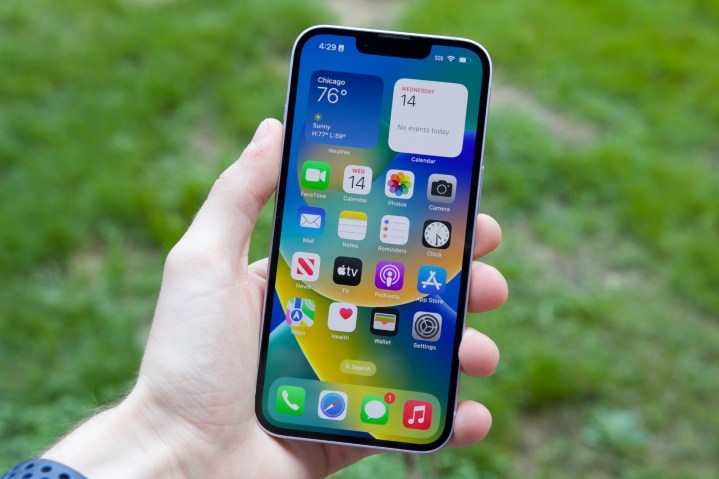
If I have one bone to pick with the iPhone 14 following my first two days with the phone, it’s got to be the display. This isn’t an outright bad screen to look at. Colors are vibrant without being too punchy, everything looks razor sharp, and it gets plenty bright for outdoor use. But just like the
I wouldn’t go as far as to call it a deal-breaker, but it does feel like a ridiculous omission in late 2022. I didn’t make a fuss when the Pixel 6a shipped with a 60Hz screen this year, but that’s a phone that costs $449. The iPhone 14 starts at $799, and at that price, 120Hz should really be standard.
More thoughts to come
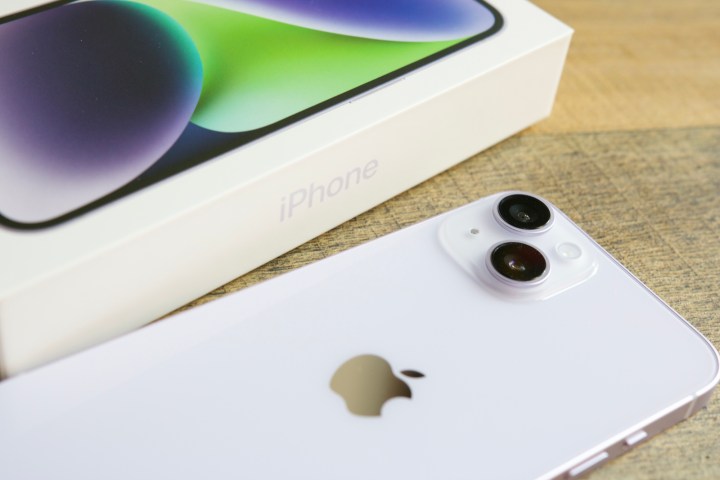
As noted at the top of the article, these are just my early thoughts on the iPhone 14 following 48 hours with the phone. I’ll be using it more rigorously over the next few days to test its battery performance, larger 12MP main camera, and a whole lot more.
While I can’t make any final judgment right now, what I will say is that I’m enjoying my time with the iPhone 14. The parts that Apple reused from the iPhone 13 are still very good, and the new bits — like Action mode and the selfie camera — are off to promising starts. It may just be “another iPhone,” but so far, it’s proving to be a damn good one.
Editors' Recommendations
- Nomad’s new iPhone case and Apple Watch band may be its coolest yet
- iPhone 16: news, rumored price, release date, and more
- iPhone SE 4: news, rumored price, release date, and more
- Here’s how Apple could change your iPhone forever
- There’s a big problem with the iPhone’s Photos app



